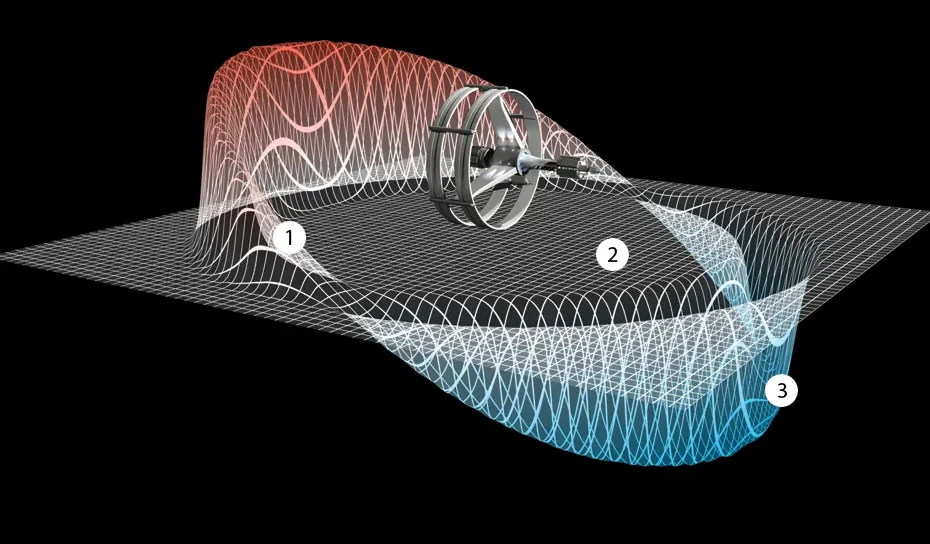It all begins with a question most of us have whispered to ourselves while watching Star Trek:
“Why can’t we just bend space and zip across the galaxy?”
At first, it sounds like pure science fiction—captains shouting “Engage!” and starships stretching into streaks of light. But over the years, physicists have looked at the math and thought: Hmm… maybe it isn’t entirely impossible.
The Spark of an Idea
The story starts in 1994 when Mexican physicist Miguel Alcubierre sat down with Einstein’s general theory of relativity and asked a mischievous question: What if, instead of moving through space faster than light, we move the space around us?
Einstein had already told us that space and time can bend, twist, and stretch. Gravity itself is nothing more than curved spacetime. Alcubierre realized you could, in theory, create a “bubble” of spacetime—compressing it in front of a ship and stretching it behind. Inside the bubble, you wouldn’t actually move faster than light; space itself would be doing the heavy lifting.
Imagine a surfer riding a cosmic wave. The board doesn’t move faster than the water, but the wave carries it forward effortlessly. That’s the warp drive concept in a nutshell.
The Physics Trick
Here’s the catch: bending space that dramatically isn’t easy. To make the Alcubierre bubble, you’d need something exotic—negative energy or negative mass, the kind of stuff not found in your local grocery store.
Now, physicists aren’t just making this up. Negative energy pops up in the Casimir effect, where two metal plates placed very close together in a vacuum create a measurable force thanks to quantum fluctuations. It’s real, but producing enough of it to warp a starship-sized bubble? That’s where our math meets a wall taller than Saturn’s rings.
Why It’s Not Hopeless
Before you sigh and shelve your dreams of interstellar road trips, know this: the concept keeps evolving.
Later studies showed Alcubierre’s original design required the energy equivalent of all the mass in the observable universe. Not exactly practical. But more recent refinements—like those by physicist Harold “Sonny” White—suggest that clever tweaks could reduce that requirement to something merely astronomical instead of utterly impossible. Think Jupiter’s worth of energy rather than the universe’s. Still sci-fi, but a smaller mountain to climb.
What a Warp Ride Might Feel Like
Let’s say, just for fun, that we solve the energy problem and fire up a warp drive. What would it be like?
Inside the bubble, you wouldn’t feel acceleration at all. To you and your coffee mug, everything would seem calm and normal. Meanwhile, an outside observer would see your ship surfing across light-years in a matter of days. No time dilation headaches, no relativistic stress—just smooth sailing on spacetime itself.
Of course, stopping the bubble neatly, avoiding cosmic debris, and making sure you don’t shred reality at the edges? Those are little details the engineers will have to sort out.
Why the Dream Matters
Yes, warp drives are still deep in the realm of theory. But ideas like these matter because they expand our imagination about what the universe allows. A century ago, black holes were laughed off as “mathematical oddities.” Now we photograph them. Supersonic flight was once fantasy; now it’s a historical fact.
Warp drives remind us that science fiction sometimes plants the seeds of science itself. Even if humanity never bends spacetime to visit Alpha Centauri, the pursuit might lead to breakthroughs in quantum physics, energy science, or even how we understand the very fabric of reality.
So the next time you see a starship stretch into that streak of light, don’t roll your eyes. Somewhere in a lab, a physicist might be sketching equations on a whiteboard, whispering to themselves:
“Maybe… just maybe.”
